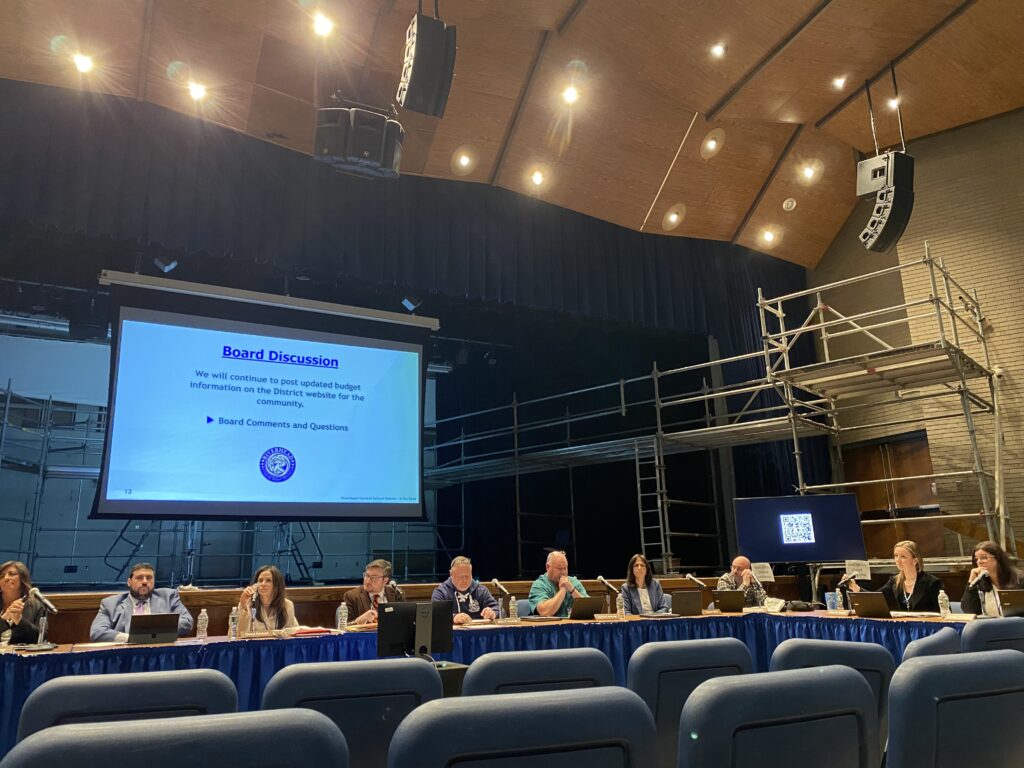Column: The names that represent a story we can’t tell

Across the country and across Long Island, America’s past is being examined, thought about in a very different light, criticized and, in some cases, kicked to the curb.
Symbols of the Confederacy have been taken down across the South, and the national movement to question the past has turned to Theodore Roosevelt, whose statue outside the American Museum of Natural History in New York City is being removed.
On Long Island, protesters want the statue in Babylon of Robert Moses — who, as a planner, is the man behind Long Island’s state park system — taken down. They say Mr. Moses supported segregation.
Locally, the Oysterponds Historical Society has launched an effort to learn more about the stories of enslaved people in Southold — who they were, how they lived, where they were buried. As part of this effort the society has taken down a sign on Narrow River Road in Orient that supposedly marked a Tuthill family burial site that included people described as the family’s “servants.”
I spoke to Amy Folk, Southold’s town historian, and Richard Wines, whose family has deep roots in Riverhead, about the history of slavery on the North Fork. Both have done considerable research on the subject — pretty much the first of its kind in either town. Both are committed to learning what can be learned so that the history of this region can be told accurately.
Here’s the big catch: There are not many names of the enslaved or the formerly enslaved in official town records in either Riverhead or Southold — or in manumission papers and family histories.
“What stands out to me here,” Mr. Wines said of his research, “first of all, these are very few names compared with the number of slaves that likely lived in Southold and Riverhead over the nearly two centuries the institution existed legally.”
Ms. Folk said the challenges in breaking away from exclusively telling the stories of the English families who came here by including Native Americans as well as the stories of the enslaved are daunting. After all, earlier town historians did virtually nothing in this area — Ms. Folk and Mr. Wines are essentially starting from scratch.
“So overall there are very few names in the government records,” she said. “The town was supposed to keep a record of all enslaved people and the town’s list is referenced in one case — but to my knowledge it did not survive.
“I want to know the minority peoples of Southold and their history,” she added. “They contributed to our founding just as much as the Europeans. I have been collecting names from church records, death records, newspapers, diaries, court records, etc. I have not as of yet been able to edit down the names that are on the list twice or more. The earliest evidence of people in bondage here is 1686, when 27 slaves are listed on the census.”
From Mr. Wines’ and Ms. Folk’s research, here are some of the names of the enslaved they have found. Some may be those who were former slaves. They are, to my mind, haunting. Each name represents a story we can’t tell, a book we can’t open. It’s a list, that’s all it is. But it’s a good list.
Each name connects us to a person who was brought here, sold or bought here, helped their owners acquire land, homes and wealth, and are likely buried here.
From Ms. Folk’s work: Catury and York, both believed to have drowned off New Suffolk; Titus, who drowned; Betty, Judith, Killis, Dinah Sworta, who possibly came from New York City; Peg, Jack, Limos, Harry, Hope, Cuff, Ginny, Robbin, Philis, Hager, Hegur, Jake.
Other possibly enslaved people in Southold were: Robin, Jack, Florice, Cyrus, Sambo, Pegg, Zil, Darby, Joseph, John, Simony, Pompey, Hannah, Jude, Mary, Bloom, Prince, Silve, Osbon, Doll, Bet.
“This is, of course, not a complete list, but it gives you a tangible connection to residents of a hidden community,” Ms. Folk said.
Here are some of the names Mr. Wines has found: Jack, Brister, Ginna, Lymas, Comus, Peggy, Elimas, Jayn, Peter, Lewis, Cyprus, Jared, Stern, Peter, Gilbert, Piers, Pompey, Rider, Lemon, Buster, Zipporah, Silas, Merigo, Tolar, Caesar, Clarissa and Chloe Luce, who was enslaved by the Rev. Abraham Luce, a man of the cloth who built the first church on Sound Avenue in 1834.
It’s a start.








